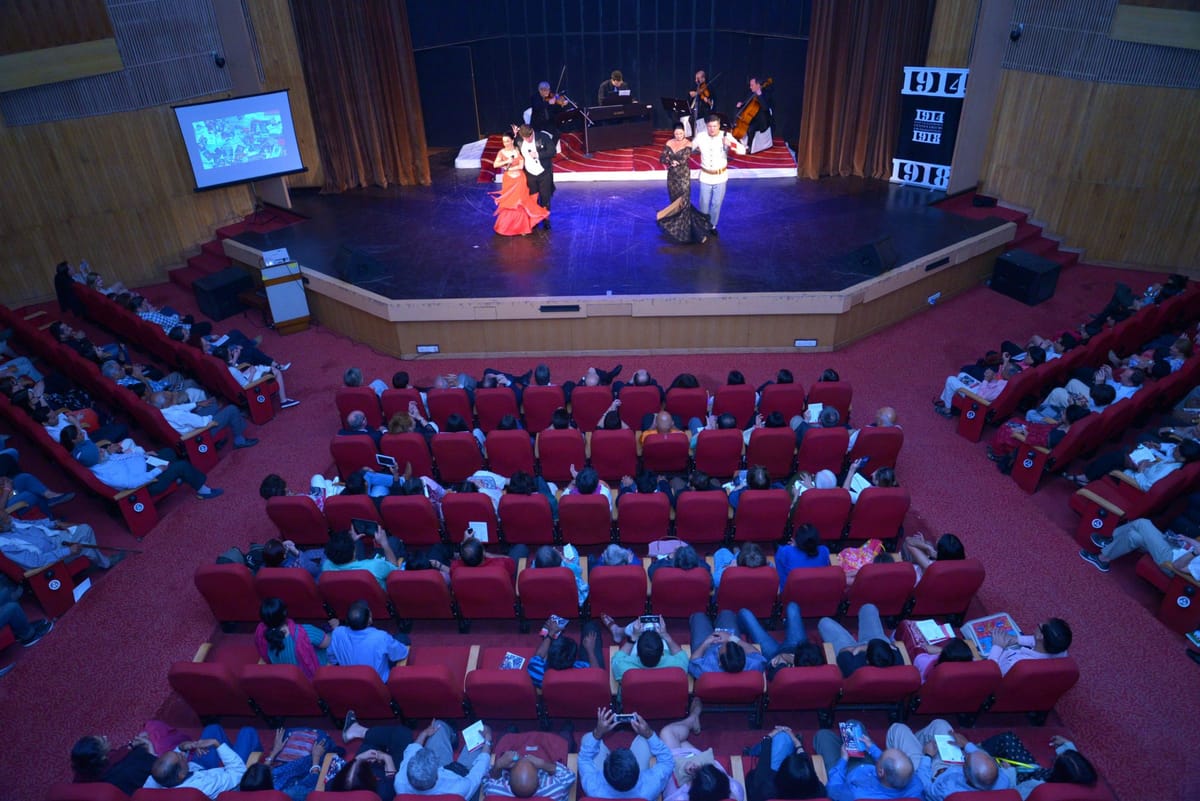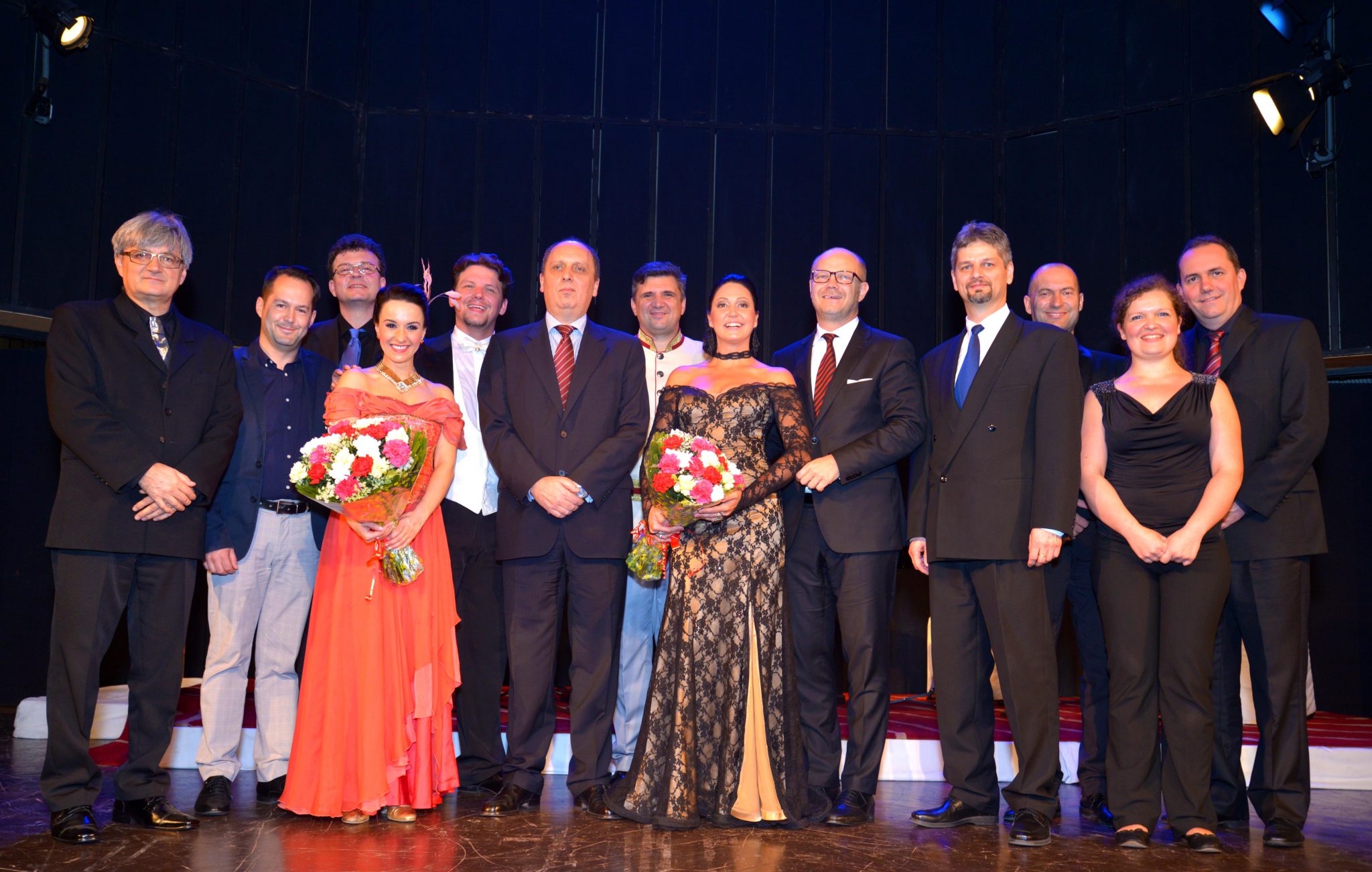An Invitation to the world of Hungarian Operetta

In the book, Music Divided- Bartók’s Legacy in the Cold War Culture, Danielle Fosler Lussier discusses Béla Bartók’s music, one of the contemporary musicians during Emmerich Kálmán’s time, and how it played out in different milieus. Although, he wasn’t an Operetta composer, being one of the most discussed figures in Hungarian music and a contemporary of Kálmán, an allusion to Bartók’s works become necessary. War and Post War situation had a difficult relationship with composers from Hungary, part of Eastern Europe. Béla Bartók, one of the prominent Hungarian composers was relegated to the archives in terms of musical innovation and modernity by Stockhausen, Maderna, Leibowitz, Adorno, amongst many other stalwarts of Western Europe Modernist composers and critics and in the public discourse too during early post war years. Bartók was accused of shying from taking the step away from tonality and remained misunderstood for being content with propagating an amalgamation of folk and Western art music by interjecting the peasant voices in the Hungarian Art music repertoire. Most of these musicians were shocked at Bartók’s reluctance towards adopting Schoenberg’s twelve tone technique. Although after his death, in the postwar years, Bartók’s music enjoyed a thriving concert life in both Western Europe and the United States. There was urgency on the part of many institutions like the Manheim Society for encouraging Contemporary Art, Munich’s Music Viva, etc. to educate the masses about modern music. Despite, populist associations, ultimately the ‘very’ folksy elements in Bartok’s work triggered the process of educating the masses.
Emmerich Kálmán’s Csárdás Princess
Jessie Wright Martin in his Monograph on a Survey of The Operettas of Emmerich Kálmán sheds light on his works mainly as an attempt to throw open his repertoire to the professional and the collegiate opera and operetta companies. Emmerich (Imre) Kálmán (1882-1953) hailed as one of the beloved trinities of Viennese Operetta alongside Johann Strauss II and Franz Lehar, has to his credit one of the most famous compositions titled Die Csárdásfürstin. What makes this composition one of his most talked about Operettas is to do with its widespread performance, as many as 100,000 times, since its 1915 premiere. It was brought to New York as ‘The Riviera Girl’ in 1917 and was brought to London as ‘The Gypsy Princess’ in 1921. What brings me to write about Die Csárdásfürstin is its presentation at the Stein Auditorium, India Habitat Centre on the 25th of March 2016 as a part of Balassi Institute’s initiative of celebrating the 100th anniversary of this operetta’s performance in other Balassi Institutes across European and Asian cities. From my brief conversation with two of the members of the Budapest Operetta Theatre, I figured that the gifted artists and the organizers are really enjoying this world tour.
Mónika Fischl, a Soprano singer belonging to the Theatre Company, says that this is her first visit to India. She adds that the short version of the Operetta focusing only the hit songs of ‘The Csárdás Princess’ has been performed across India, Croatia, Russia, Belgium, Budapest but the whole operetta has been performed in many other places. The team is smaller here with only four principal actors and four musicians compared to the original team of about 40-50 members. Here the stage is smaller too. She is happy that Csárdás Princess has been introduced to India as Operetta is typically Hungarian. Personally, she loved the songs where all four of them – Boni, Stasi, Edwin, and Sylva (played by her) came together. When asked to point out a striking difference between Opera and Operetta, she said that an Operetta is always very colourful and involves lots of dancing and dialogues.
György Lörinczy, the director of the Budapest Operetta Theatre, told me about their focus on two kinds of performances back home – Operettas and Broadway musicals. Largely comprising the works of famous composers like Franz Lehar, Strauss, etc, they also put up shows like Marie Antoinette, Beauty and Beast and Romeo and Juliet. He emphasised that the vocal renditions of the Operetta performers need to reflect a classical voice. This means that the Sopranos and Tenors need to be Opera singers whereas for Broadway musicals, the voice needs to be lighter, akin to a pop voice. The instrumental ensemble for this Operetta comprised Violin, Viola, Cello and Piano. The director said that apart from this string ensemble, the theatre company has other musicians too, who play the keyboard, drums and guitar and other instruments necessary for musicals.
Jessie Wright Martin writes about certain specific attributes noticeable in Kálmán’s body of work. Kálmán’s works include the following: a romantic leading duo (soprano and tenor), a comic ingénue duo (soprano and tenor), and a variety of comic and serious characters. The music for the romantic duo always contains rich sonorities in the tradition of romantic music: heavily orchestrated; extreme vocal demands with a high tessitura for the soprano as well as coloratura; and an extremely wide range for the tenor, often containing sections more suitable to the baritone range.
The Operettas usually had a certain inbuilt formula whereby a man and a woman fall in love, they separate due to some miscommunication and finally they come together.
The composition Csárdás Princess was completed in stages. Kálmán composed it till the outbreak of World War I. Several theatres remained closed temporarily during the war. As a mark of patriotism, Kálmán put a hold on working on the Operetta Kálmán, Die Csárdásfürstin when a theatre re-opened in 1914 and reworked on one of his earlier Operettas Der Gute Kamerad themed around war. Eventhough it had a happy ending, the show was not highly successful as the audience wanted to escape the ambience of war at least in the theatre. In 1915, the composer went to an Austrian retreat for artist and hoped to finish Die Csárdásfürstin. This time, news of a personal loss, death of his brother prohibited him to finish the Operetta. Finally the work was completed by November 1917.
What we witnessed at the Habitat Centre on the March 25th had the central characters only. The lead pair Prince Edwin and Cabaret Dancer Sylva as the protagonists, parted due to familial obligations and Countess Stasi (engaged to Prince Edwin) and Count Boni (Sylva’s partner), the ‘comic duo’ (another feature of Kálmán’s Operettas as explained by Jessie Wright Martin), who come to grow fond of each other with time. Stassi’s and Boni’s pair had a livelier and feather toned music. On stage, they had the maximum amount of dancing to do. I really enjoyed their duet ‘That Fellow Cupid’. What struck me as interesting was that Károly Peller, who played Boni, did a Da Capo of the phrasings, each time the audience gave a heartwarming cheer. Without revealing the layers of the Operetta in its entirety, the songs chosen were evocative of romance, torment, flirtatious longings and sense of contentment that each discovered in the idea of togetherness. I thoroughly enjoyed the trio of Sylva, Edwin and Boni- “O Grasp with open arms” as it was interjected with anxiety, sadness and passionate love. The instrumental ensemble was perfect to elicit the range of emotions that the actors brought out and set the mood for each song, despite the language being foreign to most of the audience. Although, the actors did a give a brief about the songs in English before they performed. For me, the high moment was when the entire cast performed ‘Strike up, Zigeuner’, drive our sorrows away. It really was a perfect ending to the endearing and the most performed Operetta that we got initiated into.






